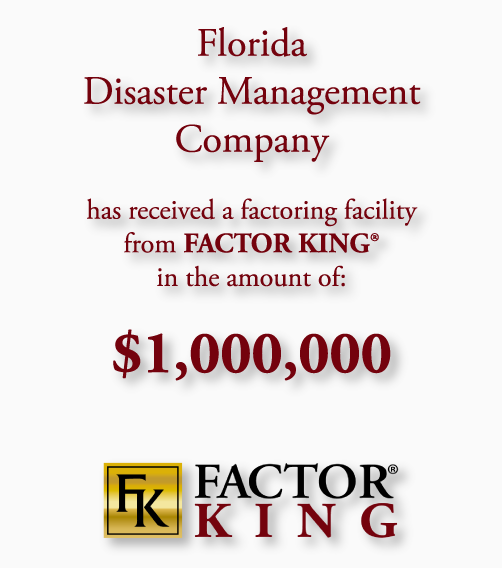The History Of Factoring
 Monday, August 31, 2009
Monday, August 31, 2009 From wikipedia.com. To view the entire source page click here.
Governments were latecomers to the facilitation of trade financed by factors. English common law originally held that unless the debtor was notified, the assignment between the seller of invoices and the factor was not valid. The Canadian Federal Government legislation governing the assignment of moneys owed by it still reflects this stance as does provincial government legislation modeled after it. As late as the current century the courts have heard arguments that without notification of the debtor the assignment was not valid. In the United States it was only in 1949 that the majority of state governments had adopted a rule that the debtor did not have to be notified thus opening up the possibility of non-notification factoring arrangements.
Originally the industry took physical possession of the goods, provided cash advances to the producer, financed the credit extended to the buyer and insured the credit strength of the buyer. In England the control over the trade thus obtained resulted in an Act of Parliament in 1696 to mitigate the monopoly power of the factors. With the development of larger firms who built their own sales forces, distribution channels, and knowledge of the financial strength of their customers, the needs for factoring services were reshaped and the industry became more specialized.
By the twentieth century in the United States factoring became the predominant form of financing working capital for the then high growth rate textile industry. In part this occurred because of the structure of the US banking system with its myriad of small banks and consequent limitations on the amount that could be advanced prudently by any one of them to a firm. In Canada, with its national banks the limitations were far less restrictive and thus factoring did not develop as widely as in the US. Even then factoring also became the dominant form of financing in the Canadian textile industry.
In the latter half of the twentieth century the introduction of computers eased the accounting burdens of factors and then small firms. The same occurred for their ability to obtain information about debtor’s creditworthiness. Introduction of the Internet and the web has accelerated the process while reducing costs. Today credit information and insurance coverage is available any time of the day or night on-line. The web has also made it possible for factors and their clients to collaborate in real-time on collections. Acceptance of signed documents provided by facsimile as being legally binding has eliminated the need for physical delivery of “originals”, thereby reducing time delays for entrepreneurs.
By the first decade of the twenty first century a basic public policy rationale for factoring remains that the product is well suited to the demands of innovative rapidly growing firms critical to economic growth. A second public policy rationale is allowing fundamentally good business to be spared the costly management time consuming trials and tribulations of bankruptcy protection for suppliers, employees and customers or to provide a source of funds during the process of restructuring the firm so that it can survive and grow.







































Reader Comments